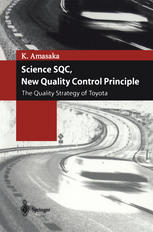

Most ebook files are in PDF format, so you can easily read them using various software such as Foxit Reader or directly on the Google Chrome browser.
Some ebook files are released by publishers in other formats such as .awz, .mobi, .epub, .fb2, etc. You may need to install specific software to read these formats on mobile/PC, such as Calibre.
Please read the tutorial at this link: https://ebookbell.com/faq
We offer FREE conversion to the popular formats you request; however, this may take some time. Therefore, right after payment, please email us, and we will try to provide the service as quickly as possible.
For some exceptional file formats or broken links (if any), please refrain from opening any disputes. Instead, email us first, and we will try to assist within a maximum of 6 hours.
EbookBell Team

5.0
60 reviewsAs is represented by the world's top-level Japanese automotive manufacturers, Japanese manufacturers have been climbing to winning positions in global businesses. The driving force of their success includes responsiveness to diversifying market needs and elevating quality requirements, clarification of development concepts that facilitate new technology, application of technology to product planning and design, advanced production control systems that elaborately utilize state-of-the-art manufacturing technologies, and flexible, efficient production. Many Japanese manufacturers succeeded in fulfilling these factors mainly because they utilize Japanese-style Lean Production Systems or the so-called Toyota Production System (TPS) and Japanese-style, scientific quality management approaches such as Statistical Quality Control (SQC) and Total Quality Management (TQM) in order to improve their corporate management technology. As severe competition among manufacturers intensify both in Japan and overseas, action against quality problems that remarkably diminish customer satisfaction, and customer-first quality management, is becoming important. Scientific quality control methods that aim to optimize production processes for building in quality were undermined by the past expansion of quantity-oriented manufacturing through automation with massive and heavy equipment.